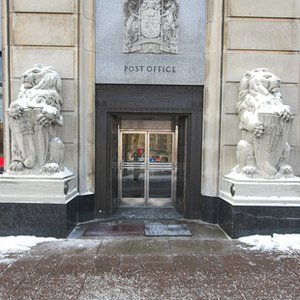
Postal money orders are a safe and convenient way to make payments through the mail. Because the money order has been purchased from the U.S. Postal Service, it cannot be returned for insufficient funds, posing no risk to the recipient of the payment. Once the sender purchases the money order, the value of the order is imprinted and protected with a watermark to prevent alterations. When filled out properly, the money order holds the value of the original purchase.
Fill in the "payee" section of the money order with the name of the person or company receiving the payment. Write the full name and address on the lines provided.
Enter your name under the "payers" section. This line may be labeled "from" instead of "payer." Include your full name and address on the lines provided.
Note the purpose of the payment under the section marked "memo" or "notes". This indicates the reason for the payment. For example, if the postal money order is for a business invoice, write the order number or the account number.
Sign the money order on the signature line at the bottom of the money order. This line may be labeled "signature" or "purchaser". Not all money orders contain this section. Do not sign the back of the money order as this space is reserved for the payee when he cashes the money order.
Remove the receipt portion of the money order. This may be a carbon copy that needs to be pulled free of the original, or it may be attached to the side or bottom of the money order. Your receipt contains a tacking number that allows you to track the money order. Without this receipt, you cannot receive a refund if the money order is lost or stolen.
References
- United States Postal Service: Money Orders
- United States Postal Service. "Sending Money Orders." Accessed Jan. 13, 2020.
- Western Union. "Do Money Orders Have an Expiration Date?" Accessed Jan. 13, 2020.
- Western Union. "How Do I Request a Money Order Refund?" Accessed Jan. 13, 2020.
- United States Postal Service. "Money Orders - The Basics." Accessed Jan. 13, 2020.
- United States Postal Service. "Money Order Inquiry System." Accessed Jan. 13, 2020.
- MoneyGram. "Money Order Information." Accessed Jan. 13, 2020.
- MoneyGram. "Money Order Claim Card." Accessed Jan. 13, 2020.
- Western Union. "All About Money Orders." Accessed Jan. 13, 2020.
- Western Union. "Money Order Research Request." Accessed Jan. 13, 2020.
- Office of the Comptroller of the Currency. "Answers About Forgery and Fraud." Accessed Jan. 13, 2020.
Writer Bio
Nannette Richford is an avid gardener, teacher and nature enthusiast with more than four years' experience in online writing. Richford holds a Bachelor of Science in secondary education from the University of Maine Orono and certifications in teaching 7-12 English, K-8 General Elementary and Birth to age 5.

